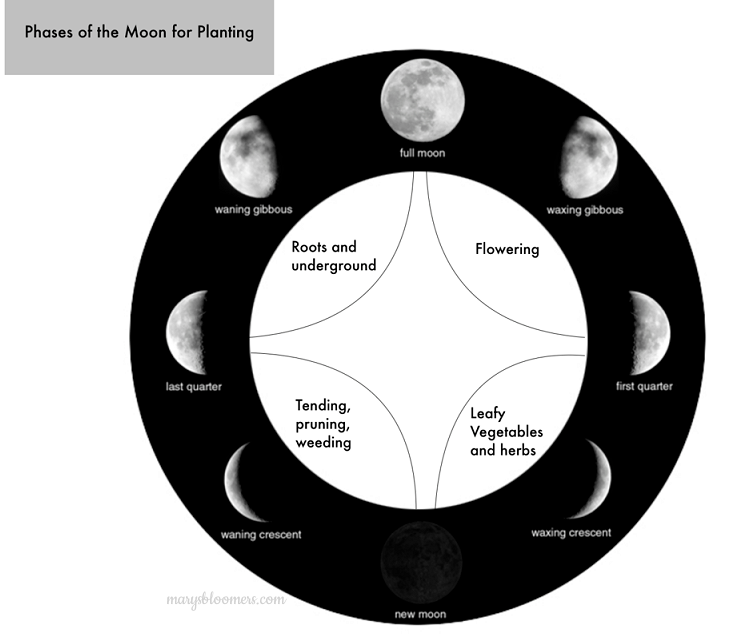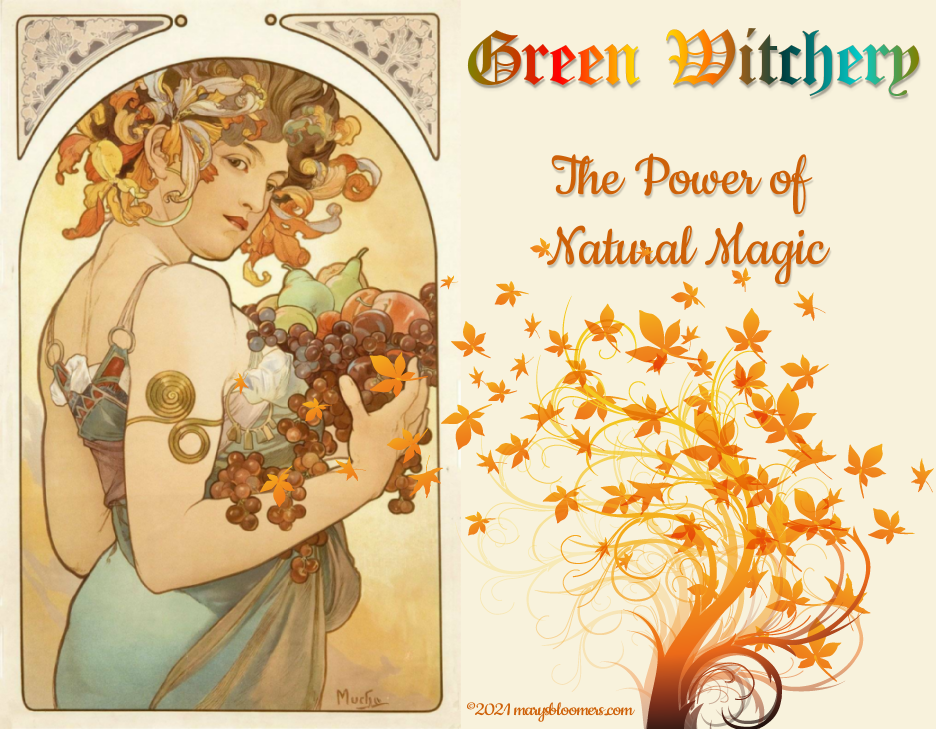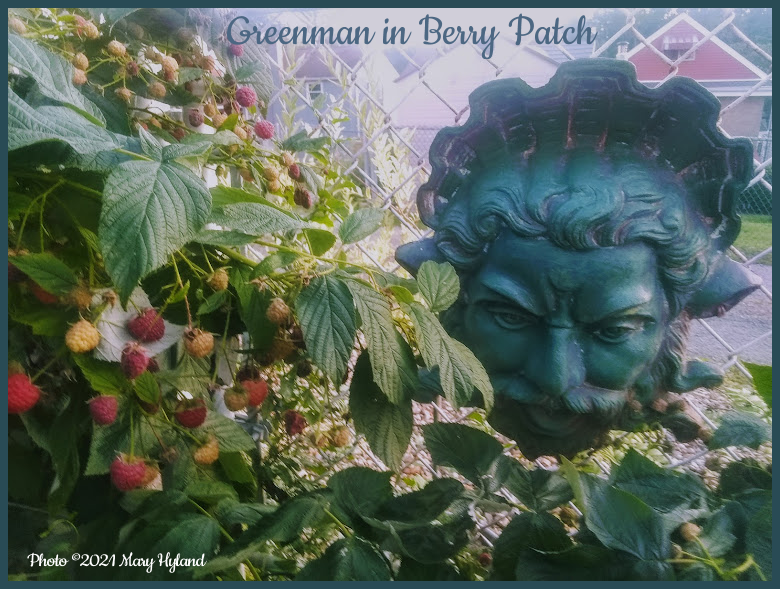|
No, it's not a club or a witches' coven. I
call it a Green Craft, in the Green Arts.
It's not something trending on FB or Twitter. Although there are
probably several modern-day groups to be found.
Green Witchery is a talent, desire and way of living that is focused on
nature, the seasons, and creating foods and remedies from what comes
from the earth. If
you feel more at home and happier in the forest, woods, mountains or
garden, if you can seem to be able to grow anything, if you love camping rough, solitary walks through greenery and
hiking, you already have the makings of becoming a Green Witch. Green
Witchery is the practice of natural magic. It is not Paganism or
Druidry, although related. Green Magic emphasizes the growing,
harvesting, and the use of herbs and flowers for healthy eating and healing.
Visit
this page to learn about foraging wild edibles and wildcrafting.
I consider Green Witchery to be a
mindful practice that connects humans to earth and it's gifts. The earth
is a living thing. Living mindfully, aware of the seasonal changes and
celebrations of food and the natural world around you is a celebration
of that life. For me, it's also a form of up cycling what nature has
created, into a design and food production statement that exemplifies who you are and where you
want to be, within your surroundings. Especially in your green spaces.
but indoors, as well. It also is a non-religious practice, but
thoroughly spiritual reverence and expression of gratitude for your
abundance, as gifted by nature. Gardeners and herbalists have a little
bit of green witch already residing within them. Any gender can easily
"become" and share the rewards and gifts of that way of life.
I do intensive gardening, give away my garden's extra bounty and the
foods and potions I create from it all the time, and I practice
herbalism, Chinese medicine and meditation. I proudly consider myself
somewhat of a
Green Witch.
The Celts and other ancient earth
revering cultures focused their lives around nature's gifts and powers -
celebrating harvests, changing seasons, and protecting it as their way
of life. There is much good magic associated with nature over the
centuries. These cultures were all but destroyed with the violent
arrival of organized religions that banned the centuries-old practices, but many secretly practiced it and
passed that magic and belief to future generations. Ironically, most of these
earth based beliefs and practice were not an organized religion. They were
the way of life for many ancient cultures. Many healers of the Romany
culture practiced healing magic and made tinctures and cures, cast
spells and were sought out by non-believers. The white witch living in
seclusion in or near a forest was, and still is, sought out in
Appalachia and deep rural areas for their medicines and spells.
To read more about nature
myths, and botanical folklore and deities, visit
this page, and for Garden Folklore, visit
this page.
To learn about earth and nature-based religions, click
here.
Green Witch/White Witch.... what's
the diff?
Many ethnicities and nationalities
remember their grandmothers and great-grandmothers as someone who had
the magical powers of healing, growing, cooking and natural living, and
it was something ingrained within their souls. Immigrants brought with
them plants and cures, recipes and methods of growing gardens, and many
practiced the spring and fall rituals of foraging what nature provides
for free.
A green witch practices natural
magic that is easily accessible and powerful. From the use of herbs and
flowers to essential oils, many of the items your average green witch
uses in her practice are probably in your garden and pantry. Not everyone
who practices magic identifies as a “witch” or Wiccan, but a green
witch specifically identifies as a witch who embraces the power of
nature for her magic. Some of us live 'seasonally" - by buying
local, seasonal produce or growing your food and preserving your
harvests for winter. Growing or foraging your food is important to
seasonal living and your health. Grow a garden filled with veggies and
herbs and lots of edible, fragrant and medicinal flowers. Seasonal
awareness includes solstice celebrations.
Most green witches consider
themselves nature witches – the seasons matter. A green witch will
place extra focus on seasonal and lunar living, following the phases of
the moon, planting according to the moon phases as the Native Americans
and other cultures practiced, tracking the cycles, eating freshly grown
produce that’s in season, nature crafting, making natural remedies,
and looking to nature for everyday serenity and guidance. They also
celebrate the solstice and equinox. Most Green Witches have sacred
spaces in their gardens and homes, where they can retreat into serenity
and feel the power and protection of Nature.
A Winter Celebration Of The
Sun
Since long before recorded history, the
winter solstice and the subsequent “return” of the sun have inspired
celebrations and rituals in various societies around the world. Most
often, winter solstice celebrations honored the symbolism of fire and
light, along with life, death, the rising sun, and the moon.
The winter solstice is the shortest day and longest night of the
year.
In the Northern Hemisphere, it takes place in late December; in the
Southern Hemisphere, it occurs in June.
From Ancient Romans to Indigenous Americans, cultures around the world
have long held feasts and celebrated holidays around the winter
solstice.
Summer Solstice
Summer solstice is the two moments during the year when the path of the
Sun in the sky is farthest north in the Northern Hemisphere (June 20 or
21) or farthest south in the Southern Hemisphere (December 21 or 22). At
the summer solstice, the Sun travels the longest path through the sky,
and that day therefore has the most daylight.
To learn how to design and grow a Moon or
Moonlight Garden, visit this page
A green witch focuses on the
mysticism of the earth, a white witch practices white magic. White
witches use practical magic focused on the greater good. The 'wise'
women and men could be found in most ancient and some modern-day Gaelic
communities proclaim that their powers were granted for goodness and to
counteract the powers of evil. Green witches focus on the natural energy
of the flora (herbs, flowers, plants and trees) of the earth. Many who
follow Green Witchery also appreciate the existence of the fae of the
woods and forests, and many believe that they inhabit their gardens and
can only be seen and heard at
night. They are considered protective and they are protected. Many
gardens are grown and ornamented with fairies in mind. They are believed
to live among the growing things and all creatures that inhabit a garden
at night.
I am reading "The Green
Witch", by Arin Murphy-Hiscock - It's a guide to everything
from green witch herbs to magical spells. You’ll learn the basics of
plants, personal altars, essential oils, and other natural magic. I like
it as a reference and an aid to meditation and mindfulness. It helps to
make your space your own, where you can practice reverence for nature
and it's beauty.
Green Witchery and Medicine
Western medicine is rooted in
science, procedures, and transparently at treating the symptoms rather
than the source. Eastern medicine practices will
treat the source. Diets are examined first, assessing if food can heal
common problems like gut issues, skin issues, or energy levels. Green
Witchery is focused on plants and food that have the power to heal.
Common Trees Considered Magical
by Green Witches
Who hasn't gazed up into the canopy of ancient trees and not
wondered about what magic it has been and seen in the centuries of it's
life?
Cherry
Cherry trees were believed to ward off the plague. During medieval times,
pieces of bark were hung over doorways and sometimes placed inside the
home.
Cherry pits, or stones, have been used as talismans to attract a
lover.
Dogwood
The dogwood is a showy tree when it comes into bloom with its large,
white flowers that are sometimes tinged with pink. In medieval Germany,
carrying a handkerchief that had been dabbed in the sap of a dogwood on
Midsummer's Day was believed to make a wish come true. Dogwood was
believed to have highly protective powers. Leaves and flowers are
sometimes placed under pillows to protect during sleep.
Hackberry
According to folklore in the Middle East, the hackberry's
fruit was believed to grow only in the moonlight. Because it was revered
as a protective tree, small pieces of wood were used as amulets. There
was also a belief that a person who slept under a hackberry would be
protected from evil spirits. This tree is frequently host to mistletoe.
Lemon - My favorite tree to
grow and use
After it was introduced into the Mediterranean region, the lemon quickly
became valued for medicinal purposes. Similarly, the lemon blossom
became widely treasured for its fragrance. Crusaders took the fruit home
with them and by the thirteenth century, lemons were being grown in the
warmer regions of Europe. During the Middle Ages, the lemon was believed
to protect against poison, the plague, and bewitchment. In art, it
became a symbol of faithful love and fertility. Well known for its
cleansing and purification properties. Place a drop or two of the
essential oil in the melted wax of a candle to enhance meditation.
Lilac
Well-loved loved for the fragrance of its flowers. Regarded as prophetic
in Wales, lilac flowers were an indication for the coming summer season.
If the buds formed late and then opened quickly, the summer would be
mostly rainy. If the flowers faded faster than normal, summer would be
very warm. In Russia, it was believed that a baby placed under a lilac
bush would receive the gift of wisdom. For seventeenth-century settlers
in North America, lilacs were a link to the homeland they left behind.
It was the second flowering shrub transported from Europe (rose was the
first). Lilac is said to foster peace and happiness and deepens
spirituality.
Maple
In medieval England large burls, a rounded outgrowth on a tree trunk,
were often used to make drinking bowls. The traditional wassail bowl was
made from maple. In parts of England, the maple was known as the may poling
tree. According to legend, the leaves became red in the autumn
because the faery living in the tree painted them. According to weather
lore, if the first sap from a tree is not sweet, it will be a long syrup
season. However, if the sap is sweet, the season for tapping will be
short.
Peach
In ancient China, the peach blossom was a symbol of renewal and
fertility. According to Chinese mythology, a peach tree grew at the gate
of the guardian spirits, giving the tree an association with protection.
Because of this, people would hang branches and woodcarvings on their
porches to ward off evil spirits. During the Middle Ages in Europe, the
peach was used for healing. Throughout Europe, the peach was a symbol of
the female genitals and used as an ingredient in love potions.
Sycamore
Sycamores are frequently misidentified as maples because of the shape of
their leaves. Sycamore has been known as a ghost tree because its pale,
mottled bark gives it an eerie appearance, especially on foggy mornings
and at dusk. The
ancient Greeks regarded this tree as a gift from the gods, and according
to legend Hercules planted sycamores to honor his father Zeus. The
Romans prized these trees so much that they poured libations of wine on
their roots. During the Middles Ages, sycamore trees growing in a
village was believed to keep the plague at bay. Sycamore aids in opening
the mind to receive information and interpret messages.
Walnut
It was common practice for Romans to bury a coin beneath a walnut tree
as an offering to Pomona, the goddess of fruit trees.
Regarded
as a magically protective tree, the walnut reputedly provided protection
from lightning and supernatural forces. As a nut with two distinctive
halves joined as one, walnuts were a symbol of marriage.
Willow
Usually found near water, the willow has been associated with sacred and
mysterious powers as well as enchantment. Although linked with death and
grieving, the weeping willow also has a long association with dispelling
sadness and recovering from emotional darkness. It was often planted in
cemeteries and depicted on gravestones for the dual purpose of both
expressing and relieving grief. In Ireland, harps were often made of
willow wood because it was believed that the tree's soul would come
forth through the music. Willow can aid you in contacting nature spirits.
Plant and Flower Colors Have
Meaning in The Green Witch's Garden
Typically, the colors in the garden
have meaning to anyone practicing nature arts, and many practitioners
follow that guideline in their plantings and ornamental decor. These
same meanings occur in the art of Feng Shui.
To read about how to create a feng shui garden, visit
this page.
To learn how to create a serenity or zen garden, visit
this page.
Click here for the traditional meanings of flowers,
Green: growth,
prosperity, tranquility
Light Green: relief, tranquility
Lime Green: awakens the spirit
Magenta: higher emotional and spiritual processes
Black: enigma, enchantment
Blue: peace, healing, relaxation
Cobalt Blue: connecting to a higher purpose
Pale Blue: mystery, contemplation |
Orange:
energy, fusion, conversation, mysticism
Pink: friendship, affection, romance
Purple: spirituality, magic, divinity
Red: power, exhilaration
Silver and Grey: goddess colors, moon magic
White: purity, innocence, new beginnings
Yellow: clarity, mental illumination, intuition |
Gardening and Farming by the Phases of the Moon
- The basics
 |
Moon phase planting has been practiced
by Native American farmers and ancient gardeners who were in tune with
nature’s patterns. Gardening according to the phases of
the Moon is an idea that has been around for as long as humans
have been growing their own food.
For most of human history,
farmers have looked to the night sky and the phases of the moon,
to know when it's best to plant their fields.
Moon phase gardening takes
into account two periods of the lunar cycle: the time between
the new Moon and the full Moon (the waxing of
the Moon), and the time between the full Moon and the new Moon
(the waning of the Moon).
It’s considered best to plant certain types of plants during
the waning of the Moon and other types planted during the waxing.
Just as the moon influences the tides, it also has a gravitational
effect on the moisture in plants (sap), the soil and water
table. These effects are magnified at different times
of the month’s moon cycle.
In today's world, many gardeners
have lost sight of this age old science-based
technique. Many who practice Green Witchery, use the Moon as a
guide for planting and harvesting the most abundant crops.
|
Moon Phase Planting
Basics
The Moon impacts plant growth
through geotropism—which is how plants grow in response to
gravity. Roots grow downward in the direction of
gravitational pull and stems grow in the opposite direction
(upwards). This behavior can be easily demonstrated with
potted plants. Lay one on its side and the stem will grow
upwards. Or think about bulbs: if you plant the bulb
incorrectly with the pointed end down, (I tend to do that often,
and the bulbs always turn around to the correct position) it will turn around and
send its shoots upward, even though it’s in total darkness.
When you plant a large seed, like melon or squash, it is suggested that
you plant the seed on it's side, because that's where it will germinate
and sprout. If you don't do this, and plant it point side down, the seed
will rotate itself to the position where the germination begins to send
up growth. There are several ongoing agricultural and scientific tests
that aim to pinpoint and verify the behaviors of plants in relation to
the moon phases.
The amount of moonlight at
different times also influences the growth of plants
As the moonlight increases (new moon and second quarter), this
stimulates leaf growth.
After the full
moon, the moonlight decreases, putting energy into the
plant roots. At this time, the above-ground leaf growth slows down.
This becomes a good time to plant your root crops and bulbs, because
of the active root growth.
Plant your annual flowers and fruit and vegetables that produce crops above-ground (leafy greens,
beans, peas, corn, tomatoes, watermelon, peppers, and
zucchini) during the waxing of the Moon—from the day the Moon is new
to the day it is full. Do this while following the guidelines of your
first and last frost dates and how many days to maturity. As the moonlight increases night by night, plants
are encouraged to grow leaves and stems.
At different moon phases,
the gravitational pull of the sun and moon are combined to create a high
sap run in plants. This is an optimum time to plant above-ground
crops like leafy greens. At other times, these natural forces
create a rest period for plants. This is an ideal time to prepare new
gardens, prune, weed or harvest.
Green Witchery is a lovely
lifestyle and tradition. So the next time you forage or harvest wild
herbs, foods and medicines, do it with this soothing and healing
mindset, and show gratitude and respect for the earth and it's
creatures. Leave the land in the shape you found it, and don't gather
more than you need to store for winter or to be self-sufficient. Try not
to remove plants by their roots, unless the root is what you're foraging
for as medicine or food. The earth will easily regenerate itself if not
too much is disturbed, trampled or removed from the plants' habitat.
Native
American Prayers
to Mother Earth--->
Medicine
Wheel Gardens--->
Article: 2022 marysbloomers.com
Photos ©2021-22 Mary Hyland
Sources of info and art:
Old Farmer's Almanac
wikipedia
History Channel
Britannica
Llewellyn's Publishing House - Body, Mind and Spirit
Pinterest - no credit found for moon graphic
Alphonse Mucha - Art nouveau goddess art
Design, graphics,
articles and
photos ©2022 marysbloomers.com™
All rights reserved.
|





